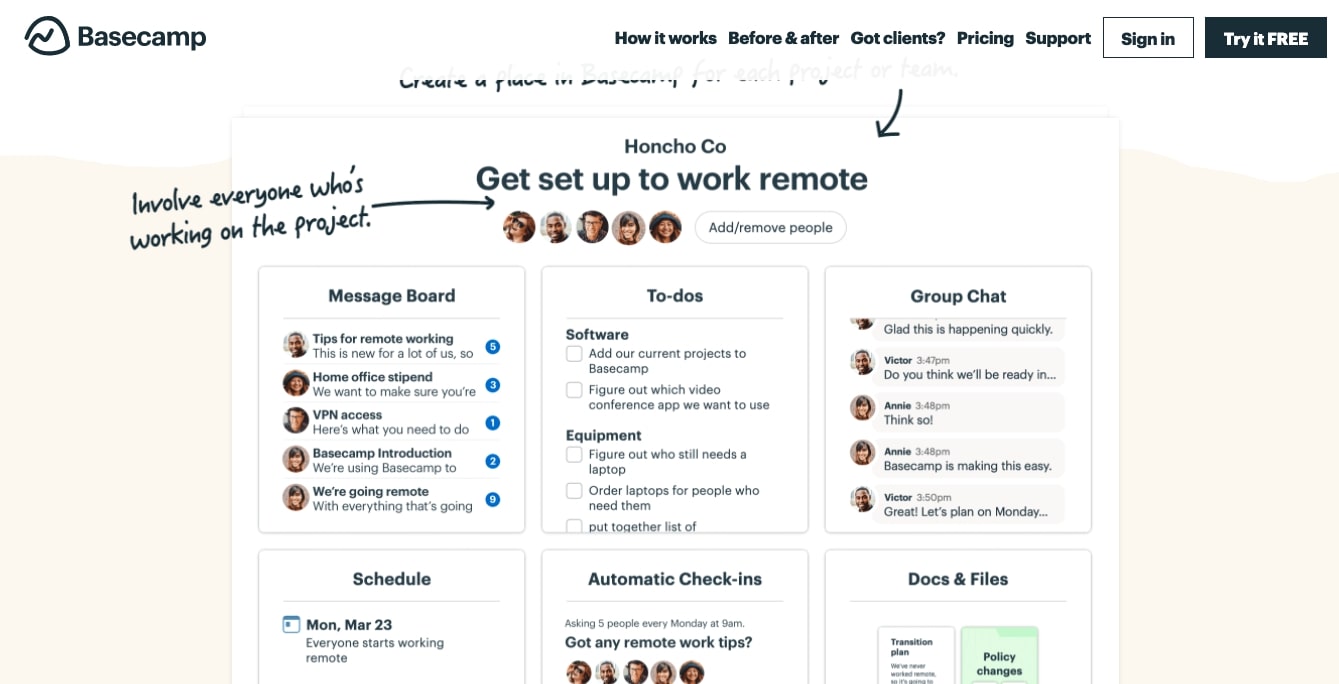7 essential collaboration tools for business
Everything you need to collaborate in the workplace

Most businesses require teams of employees to keep things humming along—but working in a group requires collaboration, which comes with many potential pitfalls. Inefficient collaboration can lead to wasted time, increased mistakes, and decreased morale.
Fortunately, there are many tools your workplace can implement to keep your team communicating effectively and working together smoothly.
In this article, we’ll go over the best collaboration tools for business. Keep in mind there are many services that will accomplish multiple items on this list. (For example, many of the best VoIP services also offer video conferencing.)
1. Cloud storage

Cloud storage exists to solve one of the most common workplace problems: what do you do when multiple people need to edit and update a document? Emailing a version of a spreadsheet back and forth too easily leads to duplicate files, errors, and confusion. Plus, what if more than one user needs to edit a file at the same time?
That’s where document sharing with cloud storage comes in. Businesses have numerous options when it comes to cloud storage. Perhaps the simplest—and the one most people are familiar with—is Google Docs. With Google Docs, multiple users can edit or leave comments on a document in real time. And since the document never leaves a Google Drive, you won’t have to worry about duplicates floating around.
There’s also several full service productivity suites, like Microsoft 365, that feature document sharing capabilities through the cloud. Whatever you go with, however, document sharing via cloud storage is a crucial collaboration tool.
2. VoIP service

Unlike cloud storage, you may not be familiar with VoIP. VoIP (Voice over Internet Protocol) enables users to make phone calls over the internet instead of through a traditional phone system. It’s a convenient and affordable way for teams to keep in touch, and offers several benefits over other phone services.
Are you a pro? Subscribe to our newsletter
Sign up to the TechRadar Pro newsletter to get all the top news, opinion, features and guidance your business needs to succeed!
Perhaps the most crucial benefit of VoIP is the ability to make and receive phone calls anywhere, as long as you have an internet connection. With more and more employees going remote, VoIP is a way for teams to communicate even when they can’t be at their physical desks.
Many VoIP services offer both voice and video calling, so you can still speak face-to-face with your coworkers. And several offer advanced upgrades, like call routing or multiple phone numbers.
3. Messaging

Many office workers know that email can be a huge time suck. By the time you’ve opened your inbox and replied to all the questions that have come in, you’ve got five more. And sending mass emails to an entire team can lead to an unruly email chain with messages that are easy to miss.
That’s why an office-wide messaging system is an essential collaboration tool. Messaging services make it easy to ask a colleague a quick question, or brainstorm remotely with a team. Some messaging services are even securely encrypted, making them a convenient way to share sensitive files among your team.
As a bonus, most messaging systems won’t require extra training to implement in your workplace. Most office messaging services have a similar interface to texting, making them accessible to almost everyone on your team.
4. Video conferencing

The coronavirus pandemic taught us all how essential a robust video conferencing service can be for keeping business running smoothly. But video conferencing isn’t just for mandatory social distancing.
Switching some in-person meetings to video conferencing can save the time and expense of driving or flying, and is far more environmentally friendly. Video conferencing can also be a powerful accessibility tool, with some services even providing live closed captioning.
You’ve probably already heard of Zoom, as it’s arguably the most popular of the video conferencing services. But if Zoom isn’t right for your business, there’s plenty of other options out there. For example, Google Meet is an easy-to-use option that unlike Zoom does not require any software downloads, making it a great choice if you are often video conferencing with people outside of your workplace.
5. Remote access VPN

As the pandemic has shown us, working remotely is no longer a simple perk offered by offices—sometimes it’s a necessity. Whether your employees are working from home for the day or for the long haul, a remote VPN, or virtual private network, is a necessity.
A remote access VPN allows employees away from the office to connect to your local office server from any location, enabling them to have the same access to any documents they would if they were at their desk. This means no lost productivity when someone has to work from home or on a business trip—your team can continue to collaborate as normally.
Another benefit of a remote access VPN is this connection is secured with end-to-end encryption, meaning your security won’t be compromised just because some of your team is out of the office.
6. Project management

In a fast-paced work environment, how do you make sure your team knows all their responsibilities and is on top of all their tasks? Good project management software can help you out.
Project management services like Asana enable you to keep your short- and long-term projects on track with assignments, to-do lists, reminders, and instructions. Some project managers, like the popular service Basecamp, have even more features, like the ability to store files related to a project and even chat with team members within the app.
7. Design tools

Teams working in creative industries often have their own unique collaboration needs. For example, it’s one thing to have a spreadsheet saved in Google Docs, but what about when multiple people need to edit a large image or video file?
Fortunately, there’s a variety of services out there that enable collaboration on creative projects. Some design apps have some collaboration capabilities built in, like Adobe Creative Cloud. Or there’s services like Cage, which connects to tools your team already uses but enables you to more seamlessly leave comments and update your project workflow.
Summary
As mentioned in the introduction, many services on the market today feature several of these functions in one convenient interface. Depending on the size of your team, their level of technological savvy, and their collaboration needs, you may want to look for the one collaboration tool to rule them all, or decide it is better to separate your messaging service from your cloud storage from your phone service.
For more ideas on how to help your team collaborate effectively, check out our guide to the best project management services or the best cloud storage services.
Sarah James is a freelance writer in Los Angeles. She has written about creativity, culture, and technology for brands like TechRadar, Submittable Content For Creatives, The Billfold, Pittsburgh City Paper, The Toast, and more.
